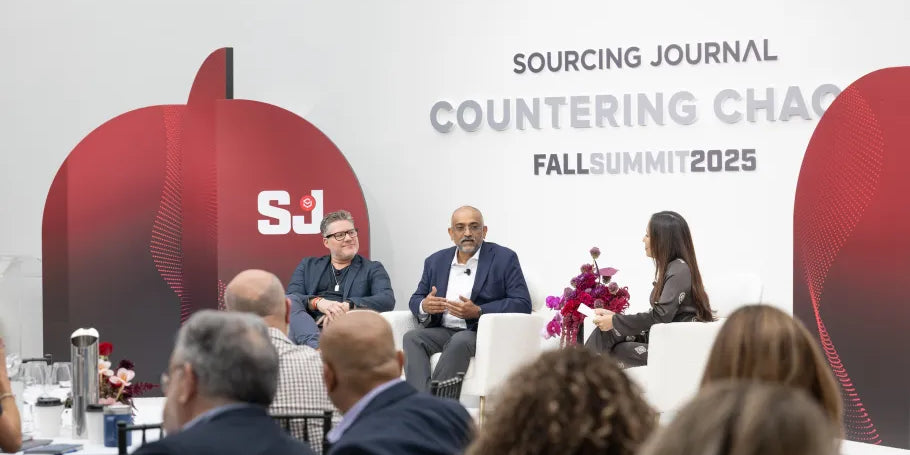Man-made cellulosic fibers (MMCFs) are becoming one of fashion's most strategic materials. Valued not only for reducing fossil-based synthetics but for their ability to combine performance, comfort, and responsibility in a single fiber system.
In 2024, global MMCF output reached 8.4 million tonnes, representing about 6% of total fiber production. And their role is expanding. For brands, they offer a pathway to reduce reliance on synthetics and irrigated cotton, while advancing circular design and verified sustainability.
Yet progress depends on what happens upstream: responsible sourcing, closed-loop chemistry, and traceability that holds up to regulation.
Man‑Made Cellulosic Fibers are mostly derived from wood or plant-based cellulose as common types like viscose, lyocell, modal, cupro, and acetate. MMCFs offer a real possibility to lower the industry’s reliance on fossil‑based synthetics. Therefore, diligence and responsible producer choices determine the outcome.
These fabrics can be produced in closed‑loop systems and from recycled inputs, two‑thirds of it come from certified or controlled feedstock.
Why MMCFs Matter for Climate and Nature
MMCFs are derived from wood or other plant-based cellulose. Core types include viscose, modal, lyocell, cupro, and acetate.
✔Viscose and modal rely on older chemistries that must be tightly managed for workers and community safety.
✔Lyocell is produced in a closed loop that recovers about 99.8% of solvent (NMMO), which is a practical benchmark for responsible operation.
✔Cupro is made from cotton-linter waste and, nowadays, is made exclusively by Asahi Kasei under the Bemberg® brand. Its production uses a closed-loop cuprammonium process that recovers and reuses copper and ammonia. Good On You labels it ‘one to watch’ pending fuller LCA transparency.
To set consistent expectations, use the ZDHC MMCF Guidelines v2.2. They define unified requirements for discharged wastewater quality, air emissions, and chemical recovery across viscose, modal, lyocell, cupro, and acetate.
For cupro in particular, they outline copper and ammonia recovery expectations and ambient ammonia guidance. Look to reference these metrics and require annual reporting per facility.
They sit inside real mills and real forests, and they decide whether MMCFs deliver climate and nature benefits at scale. MMCFs can cut a slice of fashion’s fossil footprint and ease water pressure from cotton when feedstocks are verified and mills run closed loops. Fashion for Good frames three system-level priorities that keep MMCFs credible: protect ancient and endangered forests, move beyond a linear take-make-dispose model, and tighten controls on hazardous chemicals in viscose-type processes. These decisions are directly linked to environmental and social outcomes.

Image from Good on You’s website.
The bottom line is that MMCFs are a lever for impact only when fed with certified or controlled inputs, made with high recovery and strong emissions controls, and traced through each transaction from pulp to product. It's only a climate and nature win when the system behind them holds up.
The risks sit in three places: forests, chemistry, and proof.
Cellulosic raw materials can come from places that shouldn’t be logged at all. Deforestation is an unfortunate possibility combined with biodiversity loss, peatland disturbance, and community rights violations when land tenure and Free, Prior and Informed Consent (FPIC) are weak. “Controlled wood” should be treated as a foundation, verified low-risk supply and disclosure on which forests, mills and certs actually sit behind the volumes.
The ZDHC MMCF Guidelines are widely referenced as the benchmark covering wastewater, air emissions, and recovery expectations across MMCF types.
Digital Product Passports won’t fix sourcing alone. They will reward teams already collecting good data. With textiles prioritized under the EU’s ESPR, expect delegated acts to clarify data fields. Organize MMCF chain-of-custody, recycled content, and performance data now to move faster later.
Signals of progress to watch
Innovation is giving brands practical options now. Next-gen inputs are moving from concept to capacity, textile-to-textile pulps are replacing a share of virgin viscose, creating real capacity for recycled MMCFs. Cotton linter and agricultural residues are building a broader input base that reduces pressure on forests.
At the mill, closed-loop chemistry is scaling and lyocell continues to expand into more grades and deniers, pairing softness with strength for ready-to-wear, denim blends, lingerie, and home. Producers are improving recovery rates and energy integration, making responsible operation the default rather than the exception.
Cupro is a fabric that offers a smooth hand, drape, and breathability with a waste-to-value story. As LCA transparency improves, cupro can anchor elevated categories where feel and durability are needed.
Traceability travels with the product, platform-based tracking from cellulose to fabric is becoming standard for viscose, modal, and lyocell, which reduces manual reconciliation, simplifies due diligence, and prepares teams for digital product passports by organizing data early.
Commercially, MMCFs do not automatically cost more, pricing depends on producer, contract model, timing, and committed volume. Circulose’s licensing-based approach aims to land very close to virgin viscose pricing once demand is committed. Lyocell pricing varies by producer, grade, and contract structure. Brands that map capacity, confirm delivery windows, and set a price corridor up front, avoiding surprises.
“By combining the inherent qualities and environmental benefits of our TENCEL™ Lyocell fibers with mechanically recycled cotton, silk, and wool, we’re bridging the quality gap”
— Jonatan Janmark, CEO, Circulose (Renewcell)
Retailers are already raising the traceability bar. H&M Group signed a multi-year sourcing partnership for CIRCULOSE® to replace a significant share of virgin viscose, reflecting renewed momentum for textile-to-textile inputs. Although the company declined to publish volumes cotton is 55% of H&M’s fiber use; wood and MMCFs together are 8%.
Marks & Spencer, now requires all viscose, modal, and lyocell in its products to be traced on the TextileGenesis platform by end of 2024/25. This is one of the clearest signals that transaction-level proof is becoming standard practice for MMCFs at major retailers.
Image from: CIRCULOSE®
The world is changing rather quickly: digital product passports, updated chemistry guidance, new feedstocks, and next-generation MMCFs are reshaping market’s expectations.
Man-made cellulosic fibers offer real solutions for a great change, but this progress depends on verified partners and credibility. World Collective connects brands and suppliers innovators with responsible producers, and keeps all data transparent from day one. We make this work accessible by setting realistic timelines, defining cost corridors, aligning stakeholders, and preparing product data, including DPPs.
If you are advancing MMCFs, from certified inputs to closed-loop chemistry, we want to spotlight your work. Through World Collective’s Ecosystem, you connect directly with brands building what is next, share verified data once, and turn transparency into traction.
Make your impact visible.
Join us and shape the future of sourcing.


